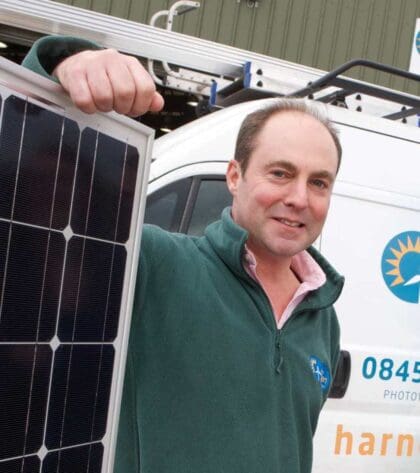
Over the last 18 months or so, the UK’s solar capacity has grown by 900 per cent with more than 81,000 homes installing solar PV. But when the government abruptly slashed the Feed-in Tariff (FiT) in October 2011, it not only forced the industry to alter course but also saw many businesses in the sector having to scrutinise their operations in order to evaluate their long term sustainability.
Although the cuts have been a significant blow to a thriving industry, it has not, however, sounded the death knell. There is no doubt that renewables will become more mainstream in the coming years as people start to think about them as a sustainable form of energy production rather than solely for financial gain. In addition, as the industry matures, installation costs will decrease and yields increase making the proposition even more attractive.
But where is the industry at now and what opportunities exist going forward? Currently more than 16 per cent of global energy consumption comes from renewable sources (From 2011 Global Status Report from REN21) and this figure is set to grow as consumers become increasingly environmentally conscious and energy prices continue to rise.
The government’s Green Deal initiative also provides a significant opportunity for the industry encouraging private firms to offer consumers energy efficiency improvements to their homes, community spaces and businesses at no upfront cost, recouping the costs through instalments on their energy bill.
The extent of success for renewables providers in the future is reliant upon approaching the industry from a consumer’s perspective and perhaps taking a more rounded view of energy management. This is already being partially imposed on the industry by the government’s decision to offer the higher FiT rate to energy efficient buildings.
Taking a look at the complete energy management picture (including energy generation and energy use) should also help the industry gain traction outside the ‘only for financial gain’ mindset that has dominated consumer thinking during the boom years. After all, one of the best long term investment returns is from using less energy, so efficiency and good energy management should be as important as generation.
When taking a broader view there are so many areas to consider, from the efficiency of boilers and insulating pipes right through to thermostatic controls and the preferred temperature of a home or office space. Naturally, insulation plays a very important role in a home’s energy efficiency but less obvious aspects such as voltage optimisation, lighting and the energy used by the electrical goods should also be considered.
Surprisingly, lighting comprises around 8 per cent of a typical household’s energy bill (From the Energysavingtrust.org) and cutting this is one of the easiest ways to save energy and therefore money in the home. Changing lighting in a business generally saves around 20 per cent of electricity use. Fitting just one energy-saving light bulb can save you on average £3 a year and, considering there are 650 million inefficient light bulbs in UK homes, there are some considerable savings to be made and opportunities for business.
The other key area is the electrical goods and the role they play in an energy efficient home. Admittedly, it may be uneconomical and environmentally wasteful to replace them all in favour of more energy efficient products but voltage optimisers that lower and regulate the incoming voltage to a constant 220V can bring a 10 per cent greater efficiency to electricity bills and should also be examined.
Although the gold rush that the solar PV market recently experienced is now in the past, what is emerging is perhaps a more complete and long-term approach to energy generation and management. With such a sustainable framework, we in turn are more likely to benefit from a more sustainable industry.
